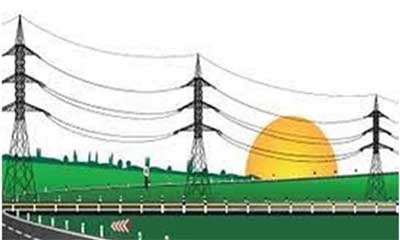Relevance: GS-3: Infrastructure: Energy, Ports, Roads, Airports, Railways etc.
Key phrases: Green energy corridor, PGCIL, Renewable energy, interstate transmission, solar and wind power.
Why in News?
- The Government on January 6 approved the second phase of the Green Energy Corridor with an outlay of ₹12,031 crore to facilitate grid integration and power evacuation of about 20 GW of renewable energy projects in seven states.
What is Green Energy Corridor?
- The Green Energy Corridor Project aims at synchronizing electricity produced from renewable sources, such as solar and wind, with conventional power stations in the grid.
- Green Energy Corridor is an intra-/ inter-state transmission system which is being implemented by eight renewable rich states in India – Tamil Nadu, Rajasthan, Karnataka, Andhra Pradesh, Maharashtra, Gujarat, Himachal Pradesh and Madhya Pradesh.
- Intra-State Transmission System is being implemented by respective State Transmission Utilities (STU) and Inter-State Transmission System is being implemented by Power Grid Corporation of India Ltd. (PGCIL).
- The scheme will facilitate grid integration and power evacuation of about 20 GW of renewable energy (RE) projects in seven states.
Green Energy Corridor Phase 1
- The Government of India initiated the Green Energy Corridor project in 2013.
- It is under implementation in renewable resource rich states for the likely renewable power capacity addition during 12thFive Year Plan period.
- The first phase of green energy corridors is under implementation in Andhra Pradesh, Gujarat, Himachal Pradesh, Karnataka, Madhya Pradesh, Maharashtra, Rajasthan and Tamil Nadu and will help supply around 20 GW of renewable energy by 2022.
Green Energy Corridor Phase 2
- The second phase of the green energy corridor project will involve adding approximately 10,750 circuit km of transmission lines and 27,500 mega volt-amperes (MVA) transformation capacity of substations.
- The scheme will help in achieving the target of 450 GW installed RE capacity by 2030.
Need for a Green Energy Corridor in India:
- The project aims at integrating large-scale renewable generation capacity addition with the main grid.
- Last year Prime Minister pledged to increase the country’s non-fossil fuel power generation capacity to 500GW and meet 50% of its energy requirements from renewable sources by the end of this decade. So there is a need to integration these energy.
- The country needs to prepare itself for greater penetration of renewable energy.
- Grid stability and security are the main concerns for India presently.
- The Ministry of Power has proposed to set up Renewable Energy Management Centres (REMCs) to help integrate renewables into the grid.
- These centers will be responsible for forecasting and scheduling renewable energy generation at state and regional levels, and coordinating with state load dispatch centers (SLDCs).
Benefits of a Green Energy Corridor:
- The scheme will help in achieving the target of 450 GW installed RE capacity by 2030.
- It will also contribute to long-term energy security of the country and promote ecologically sustainable growth by reducing the carbon footprint.
- Besides, it will generate large direct and indirect employment opportunities for both skilled and unskilled personnel in power and other related sectors, the statement said.
- The GEC will help in offsetting the intra-state transmission charges and keep the power costs down. Thus, the government support will ultimately benefit the end users, it added.
- It helps India pledged to increase the share of non-fossil fuels-based electricity to 40% by 2030.
- The project is expected to help India meet the climate commitments it made at the COP-26 summit in Glasgow.
- This will promote ecologically sustainable growth and contribute to the long term energy security of the country,
- The corridor is expected to help ensure that the huge injection of electricity into the national grid from intermittent energy sources such as solar and wind doesn’t threaten the grid.
Way forward:
- The project is important for strengthening and creating a reliable transmission infrastructure, evacuation of power from renewable energy projects and renewable rich states, and increasing the share of renewable energy generation.
- The renewable energy generation is increasing at a fast pace in India. The country’s cumulative installed capacity reached 20 GW for solar and 32.75 GW for wind.
- The country ranks fourth globally, in terms of wind power installed capacity, after China, USA and Germany.
- The pace should continue improving in the future. It is, therefore, high-time that the country prepares itself to absorb and transmit these huge renewable energy capacities.
Source: The Hindu
Mains Question:
Q. The Government recently approved the second phase of the Green Energy Corridor. In light of this statement write a note on India's green energy corridor? How can it contribute to the long term energy security of the country? Illustrate.









